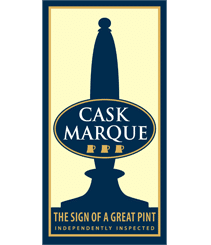Real ale may be the success story of British beer, but the new Good Beer Guide, published by CARMA, warns of possible threats posed by global brewers moving into the buoyant cask sector.
The new edition of the Guide – this year sponsored by beer quality assessor Cask Marque – records the vibrancy of the British real ale market, with more than 200 new breweries opening in the past year, with 1,540 now operating in Britain.
The Guide reports that the world’s two biggest brewers, AB InBev and SABMiller, are due to merge this month at a cost of £79 billion and have already moved into the London craft sector.
“In 2015,” Guide Editor Roger Protz says, “SABMiller bought the Meantime Brewery in Greenwich and paid an astonishing £120 million. As a result of the takeover of SAB, ownership passed to AB InBev In order to meet the demands of regulators in the United States and the European Union, AB has had to divest some of its brands and breweries and has sold Meantime to Asahi of Japan.”
At the same time, AB has bought another London craft brewery, Camden Town, for £85 million and plans to make it a leading player in the capital’s beer sector and will use its marketing muscle to undercut competitors.
In a special interview for the Guide, Professor John Colley of Warwick University’s Business School, who is an expert on global companies, says the likes of AB InBev and SAB Miller can strip costs from production as a result of their ability to bulk buy such raw materials as grain and hops at enormous discounts.
Professor Colley adds that big brewers enjoy 40 per cent lower costs than even medium size producers. He says that when AB bought Modelo of Mexico it stripped 20 per of costs from the company. With Beck’s in Germany it took out 15 per cent of costs.
He estimates that the AB merger with SABMiller will generate cost savings of $1.4 billion.
The end result is cheaper beer that drives other brewers’ products off bars and supermarket shelves.
Roger Protz says: “The way in which the global brewers are muscling in on the craft sector in Britain and other countries is a cause for concern and a potential threat to the independent sector. In its 44 year history, the Guide has never been complacent and believes that beer drinkers’ choice and freedom demand constant vigilance.”
Real ale is the success story of British beer, according to the 2017 edition of the GBG, and previous reports published by CAMRA.
Roger Protz says: “The real ale revolution goes roaring on. As well as new breweries opening, others are expanding their sites or moving to bigger premises to cope with the demand for their beers.
“In an overall declining beer market, real ale’s share is impressive. It’s not only in growth but is expected to grow dramatically over the next few years.”
The annual Cask Report – produced independently of CAMRA, shows that real ale accounts for 55 per cent of the total ale market and that share is projected to grow to 70 per cent by 2020.
Roger Protz adds: “As the ale market includes such national and expensively promoted keg brands as Guinness, John Smith’s and Tetley’s, this is a remarkable achievement by the cask ale sector that has to rely on word-of-mouth and CAMRA beer festivals to spread the message.”
New breweries are also adding to drinkers’ pleasure with a range of new beer styles. Protz says: “Alongside such staple brews as Mild, Bitter and Golden Ale, brewers have revived such famous old styles as Porter and India Pale Ale [IPA] and widened the boundaries of beer appreciation with ales aged in whisky and wine barrels. They add fruit, herbs, spices and coffee beans to their beers and embrace such European styles as Belgian farmhouse and sour beers fermented with wild yeasts.”


